The USMNT’s Final Exam
The opportunity to play at one of sports’ most iconic and hallowed grounds—the place where Pelé and Brazil’s “jogo bonito” dazzled the world in novel living color and where Diego Maradona famously channeled both God and the devil—comes at a cost.
The Estadio Azteca, Mexico City’s enormous and intimidating 87,500-seat stadium (it once held up to 107,000), sits about 10 miles south of the capital’s historic center and an exhausting 7,200 feet above sea level. When it’s full, and when the air is thin, hot and hazy, the Azteca inevitably extracts a heavy price.
“It’s hard to play here. It wears you out. It’s just exhausting,” U.S. legend Landon Donovan said moments after a 2009 World Cup qualifying defeat.
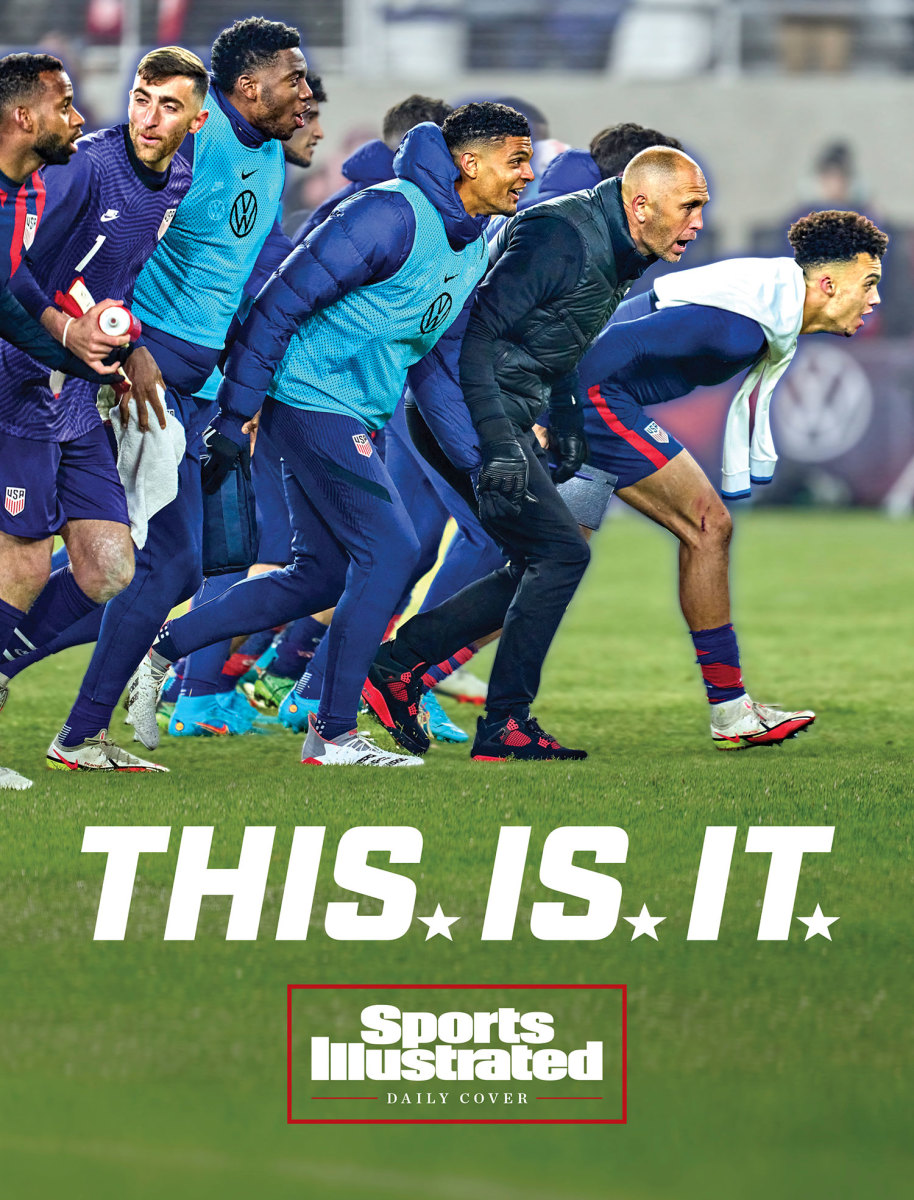
The Azteca tests and often saps your energy, will and resolve. Composure and focus are stretched to the limit. Players suffer, and even spectators unfamiliar with the environment can struggle climbing the concourse’s interminable ramps. Opponents will leave points behind. Earnie Stewart remembers leaving his voice there as well.
“Once you leave the field, you can’t speak to each other anymore,” says U.S. Soccer’s sporting director, who played there twice during his 13 years as a men’s national team midfielder.
“Coaching [teammates] at Azteca with a stadium full, with the vuvuzelas going and people shouting and chanting, to coach from one person to another over 10 feet, you have to shout the whole game,” he recalls. “And I just remember after games—one, because of the air but also two, just because of the amount of coaching that you try to do—it was really difficult to speak after the game. So you would actually lose your voice. It’s shot.”
The Azteca is the towering, concrete embodiment of home field advantage. It’s soccer’s Death Star. Although the U.S. won a friendly there in 2012, in official competition the Americans are winless in 10 Azteca appearances (0-7-3) and just 1-23-3 all-time as a guest of El Tri. The draws—the narrow escapes—are the stuff of national team legend. And most visitors would be happy with that. Across 50 years, Mexico has lost only two World Cup qualifiers at Azteca.
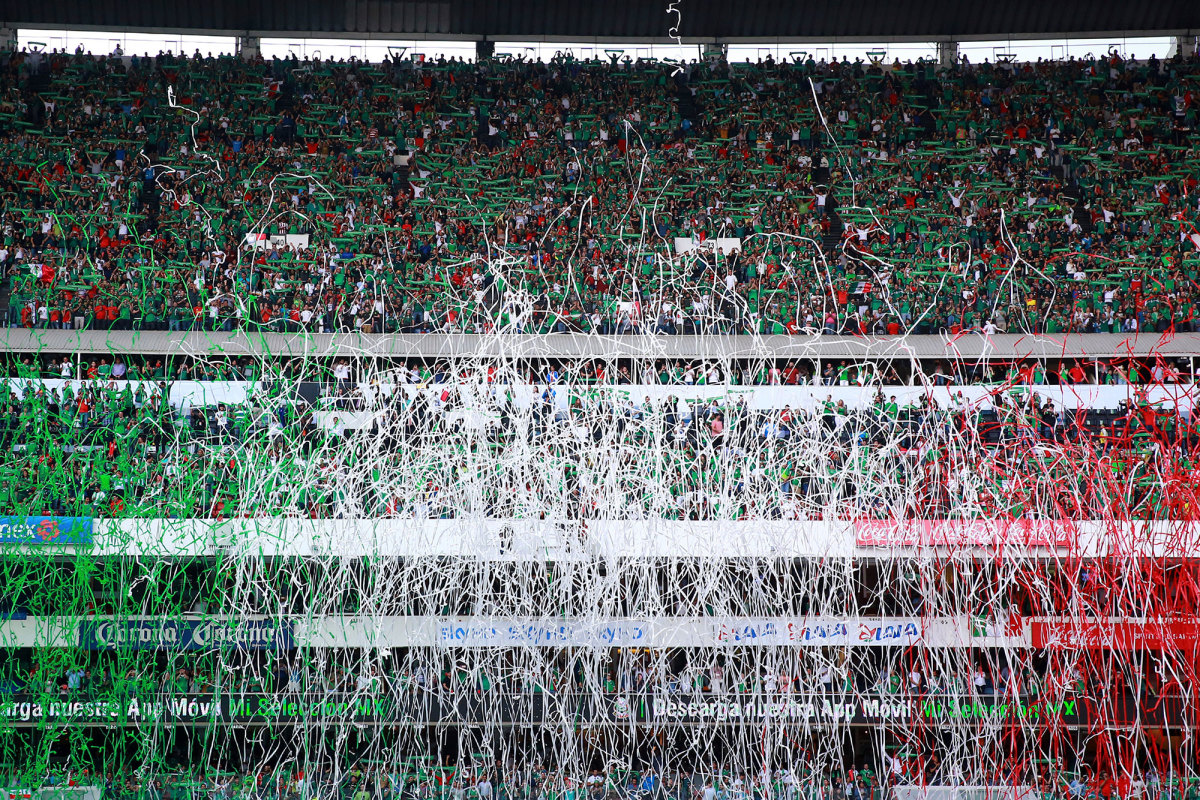
But for a young U.S. team that’s now on the precipice of dreamland or disaster, this week’s return to the Azteca is just the nail-biting beginning. An unprecedented challenge awaits. Pick your starting point and consider it the first day of school: the trauma of qualifying failure in 2017, the hiring of coach Gregg Berhalter 14 months later, the transition and commitment to youth following the onset of the pandemic or the humbling 0-0-2 start to World Cup qualifying last September. It’s all been building to this.
Over the course of the next eight days, Berhalter and his historically young and promising squad will take their final exam. Everything they’ve developed and learned, every bit of experience, confidence and chemistry they’ve established, will be put to the test in the most meaningful games and in the most demanding environments. A ticket to the November-December World Cup in Qatar is the short-term prize. Longer term, the next eight days could serve as a referendum on Berhalter, Stewart and the trajectory of the most hyped and scrutinized generation of men in American soccer annals.
The U.S. doesn’t necessarily need to take anything away from Azteca on Thursday evening. But if it leaves too much behind—if it loses its momentum, its energy or its focus—then it’ll risk missing another World Cup, compounding the persistent agony of that infamous 2017 defeat in Couva and forfeiting a priceless chance to build the sport ahead of the ’26 tournament co-hosted by the U.S., Mexico and Canada.
“This is make-it-or-break-it time, you know what I mean? That’s really what it is,” says 2014 World Cup veteran DeAndre Yedlin, the most experienced player on the current roster. “You fail or you don’t. So yeah, we’re going to have basically three final tests that we have to be well prepared for, and I’m confident that everybody will be prepared for it.”
Yedlin is the exception, and at 28, the new Inter Miami defender is about five years older than Berhalter’s average Octagonal starting lineup. So considering that lack of World Cup seasoning, second isn’t a terrible place to be in Concacaf’s eight-team final qualifying round. But it’s precarious. At 6-2-3, the U.S. has a tenuous hold on one of the region’s three automatic World Cup spots. The fourth-place finisher will be sent to a one-game playoff in June against a country from Oceania (likely New Zealand). The undefeated Canadians, who probably are the most surprising soccer story on the planet, have one ticket all but locked up. The remaining two are being contested by the U.S., Mexico (6-2-3), Panama (5-4-2) and Costa Rica (4-3-4).
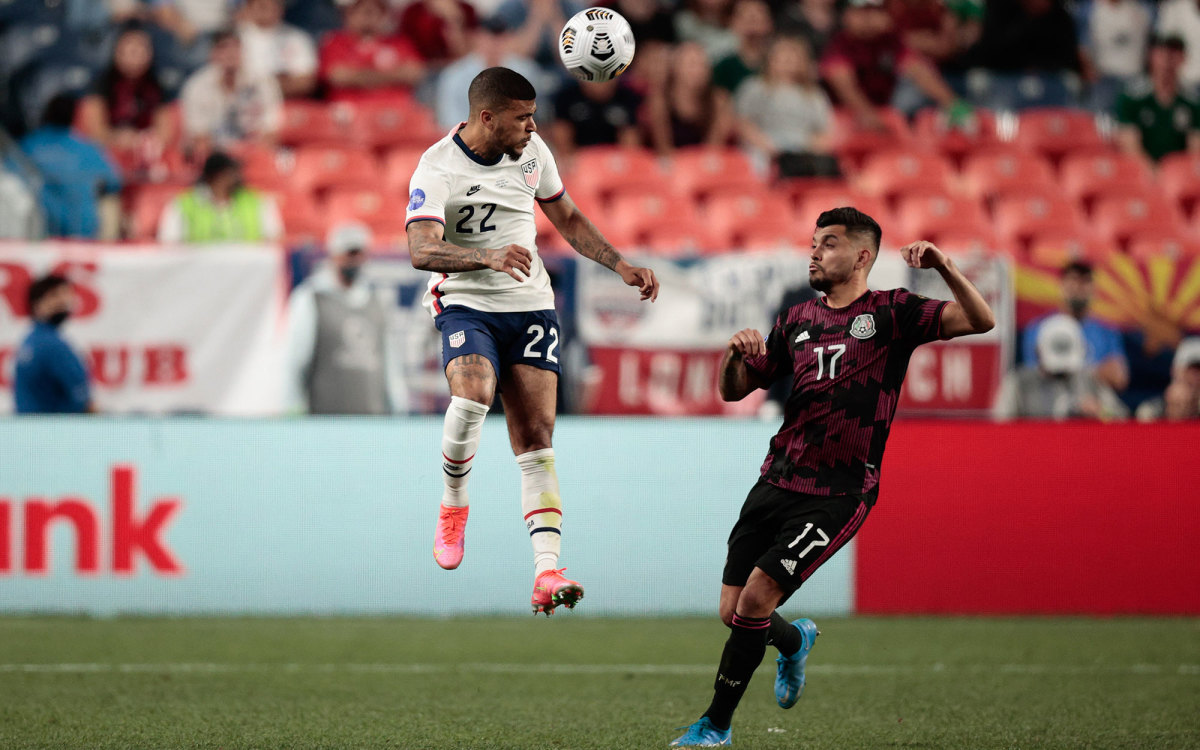
But what the standings don’t show is that the Americans have the toughest March of those five contenders: at El Tri, followed by Sunday’s home finale against fourth-place Panama in Orlando, and then a March 30 visit to Costa Rica, where the Americans’ all-time record is even worse than it is in Mexico. There are no bottom-feeders on the U.S. schedule. While three points in central Florida would be enough unless Costa Rica runs the table, a point taken in either Mexico City or San José would ease the nerves. And that’s far easier written than done.
“Whatever we’re predicting is going to happen in this window, throw it out. Because something else will happen, trust me,” Berhalter said last week. “That’s how this whole thing’s been going. It’s exciting and for us it’s only about staying in the moment, not getting ahead of ourselves and focusing on each training session and each game as they come.”
Qualification typically is decided late. Through the six cycles of Concacaf’s six-team Hexagonal, which required 10 games, the U.S.’s fate was determined on matchday eight or later on five occasions. Stewart says they expected that sort of conclusion this time as well. What feels different now is the narrative and the nerves, at least outside the locker room. Failure is now a comprehensible outcome, and there are eerie parallels between this run and the 2017 disaster. They start with tight standings, an Orlando meeting with Los Canaleros and then a potentially decisive road finale.
Complicating matters further are several noteworthy U.S. injuries and the compressed timeframe, starting with Thursday’s test in the altitude at Azteca. For comparison’s sake, a three-game World Cup group stage traditionally is scheduled over 11 days. These Octagonal windows last only seven, forcing Berhalter to consider significant squad rotation and delighting those who enjoy a little game theory. Fielding your strongest lineup in Mexico City and trying to secure that additional point may leave vital players with tired legs ahead of the must-win showdown against Panama. But save your best XI for game No. 2 and you might still wind up needing a good result in Costa Rica, where Los Ticos probably will be playing for their World Cup lives.
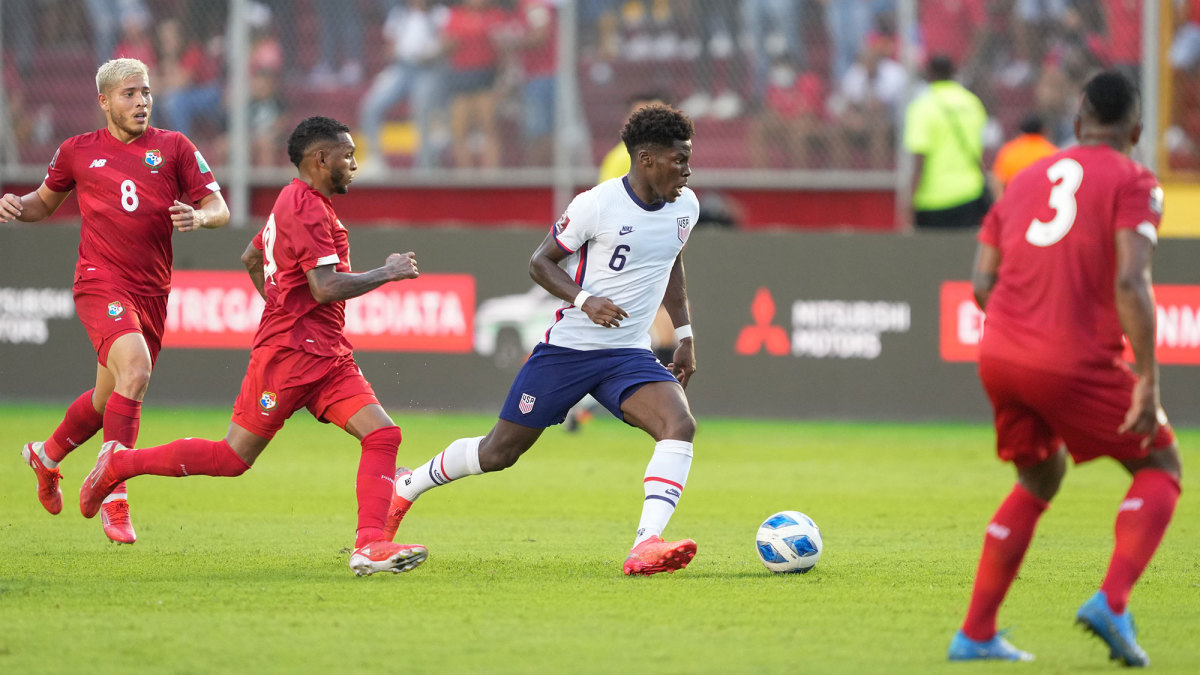
Berhalter insisted that he has men with the fitness and mindset to run that gauntlet. Five U.S. players have started three times in one of the previous four three-game windows. But none of those windows kicked off at 7,200 feet. Such are the demands at Azteca that in the past, the U.S. spent several days training at altitude and even scheduled preceding qualifiers in Denver in order to ease the transition. The calendar doesn’t afford that opportunity this month, however. The U.S. practiced in Houston for a couple days before flying to Mexico on Wednesday, thereby limiting the amount of players’ exposure to the environment.
“I wouldn't rule out a player being able to play 90 minutes at Azteca and 90 minutes in Orlando and 90 minutes again in San José. When you look at some of our players, the rhythm that they're playing is basically Saturday, Wednesday, Saturday, Wednesday through most of the year,” Berhalter said last week, adding that he plans to use all five available substitutes in Mexico. “So some of our players—not all of them—but some of them are prepared, and some of them will be able to play three 90-minute games. It’s just identifying who and then rotating other ones out.”
Berhalter has tested varying levels of squad rotation during the Octagonal but has yet to solve the vexing second-game problem that’s caused so much of his squad’s distress. The U.S. is 0-2-2 in match No. 2 of a qualifying window and has scored just twice. One of those two defeats came in Panama, in what was the Americans’ worst performance of the competition.
Then comes the visit to Costa Rica, where the U.S. is 0-9-2 all-time. For years, it was the cauldron of the Estadio Ricardo Saprissa, with its steep seating and rock-hard artificial turf field, that was ground zero for so much defeat. But Los Ticos’ transition to their new Estadio Nacional just west of downtown hasn’t made that trip easier, as evidenced by the 4–0 shellacking imposed on coach Jurgen Klinsmann’s U.S. five years ago.
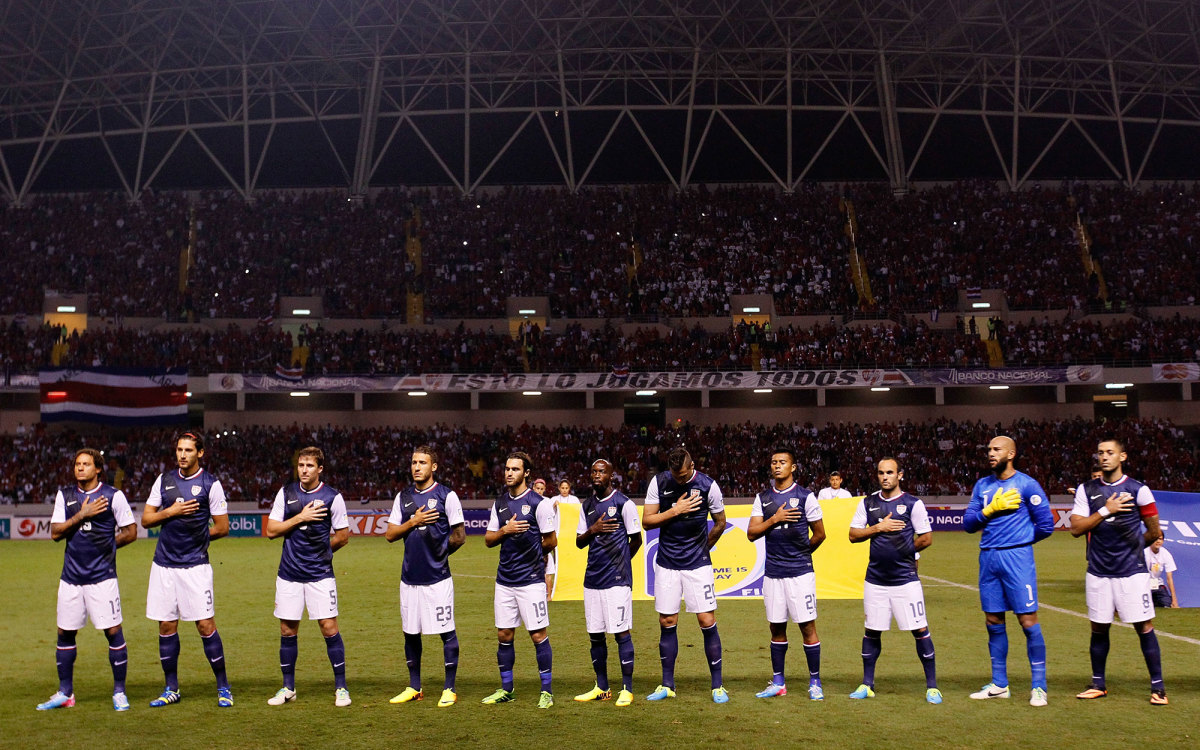
Negotiating Concacaf can mean death by a thousand distractions. It’s about the little bits of gamesmanship and confrontation that, either individually or in sum, take your mind off the game or your eyes off the ball just enough to make a potential difference. The U.S. began the Octagonal with a baptism by firework—a display of pyrotechnics along the east side of the packed and rocking Estadio Cuscatlán in San Salvador that continued well past kickoff and almost certainly isn’t part of FIFA’s standard match protocol. This was far from the controlled, mostly sanitized environment that men from MLS or European clubs are used to, and it has a knack for leveling the playing field.
“The one atmosphere that outperformed anything I’ve ever seen before from them was El Salvador. I’ve never seen that from them as a country in all my years playing down there,” Berhalter says.
“It’s different. I can’t completely get the grip on it, but there’s a reason why going away in Concacaf is so difficult,” says Yedlin, who’s played in MLS, England and Turkey. “Teams there, they get this extra sort of confidence. That makes it really difficult to play against them.
“It’s written through history.”
The Costa Ricans are masters of Concacaf’s dark arts. They don’t need Saprissa. In 2013 it began at the airport, where authorities forced the U.S. to exit through the public terminal and board a bus whose route and destination were shared with fans. Local clubs apparently were told not to make their facilities available for U.S. training, so Klinsmann’s team wound up practicing at a Dos Pinos dairy plant. The company’s mascot—a cow, naturally—interrupted media interviews with an airhorn. Game balls weren’t provided for training. The lights were turned out during the Americans’ prematch stadium session and walk-through. And then the U.S. was hammered.
This national team isn’t that national team. But the U.S. still won’t want to leave qualification hinging on a successful trip to Costa Rica. Berhalter says he’s hoping that Concacaf’s evolution—games are now played at night, the Azteca has been refurbished, there’s a track around the pitch in San José, fields have improved, etc.—will help reduce the impact of those distractions. In addition, the Azteca likely won’t be full as the Mexican federation reportedly intends to prioritize security following FIFA sanctions for homophobic chanting and this month’s shocking riot during a Liga MX match in Querétaro.
“This isn’t to minimize any of our opponents, but what I would say is everything in Concacaf has been turned on its head,” Berhalter says. “And I think that rings true to these opponents. I think Mexico at Azteca hasn’t been as dominant as they have in the past [3-0-2 in the Octagonal]. I wouldn’t look at it with the same sense and say, ‘Oh, this team has never won in Azteca. It’s an impossible task,’ or ‘This team has never won in Costa Rica. It’s an impossible task.’ Everything’s different.
“It’s not that it’s easier. It’s just a little different.”

The U.S. team that will sit for this final exam is a little different as well. The work Berhalter and his staff have been doing to develop depth within the context of his complex playing style—notably by contesting last year’s Concacaf Gold Cup and Nations League with almost entirely different rosters—will have to pay dividends this week. There are three major absences.
Midfielder Weston McKennie is probably the most complete player in the pool and was massively influential after returning from his September suspension. The 23-year-old has become the face of this national team’s Concacaf learning curve, not to mention a box-to-box force on the field and a dynamic leader and personality off it. He’s out until the summer with a broken foot suffered while on Champions League duty with Juventus.
“You don’t replace him,” Berhalter said of McKennie last week. “He’s been so important to this group that we’re not going to plug a guy in and get a like-for-like. But that’s O.K. We’ve won games before without him and we’ll do it again.”
Workhorse winger Brenden Aaronson, the only U.S. player to appear in all 11 Octagonal matches, was ruled out Monday with a knee injury suffered over the weekend. And Barcelona defender Sergiño Dest, who adds a unique attacking dimension from out wide, is absent with a hurt hamstring.
There is some good news, however. Christian Pulisic is in outstanding form at Chelsea and has a knack for showing up in big games. Borussia Dortmund tracker Gio Reyna is healthy and finally in the U.S. fold after months on the international sideline, and goalkeeper Zack Steffen has overcome back problems and started for Manchester City this past weekend. Other issues, like solving the lingering puzzle at striker, are more routine national team concerns.
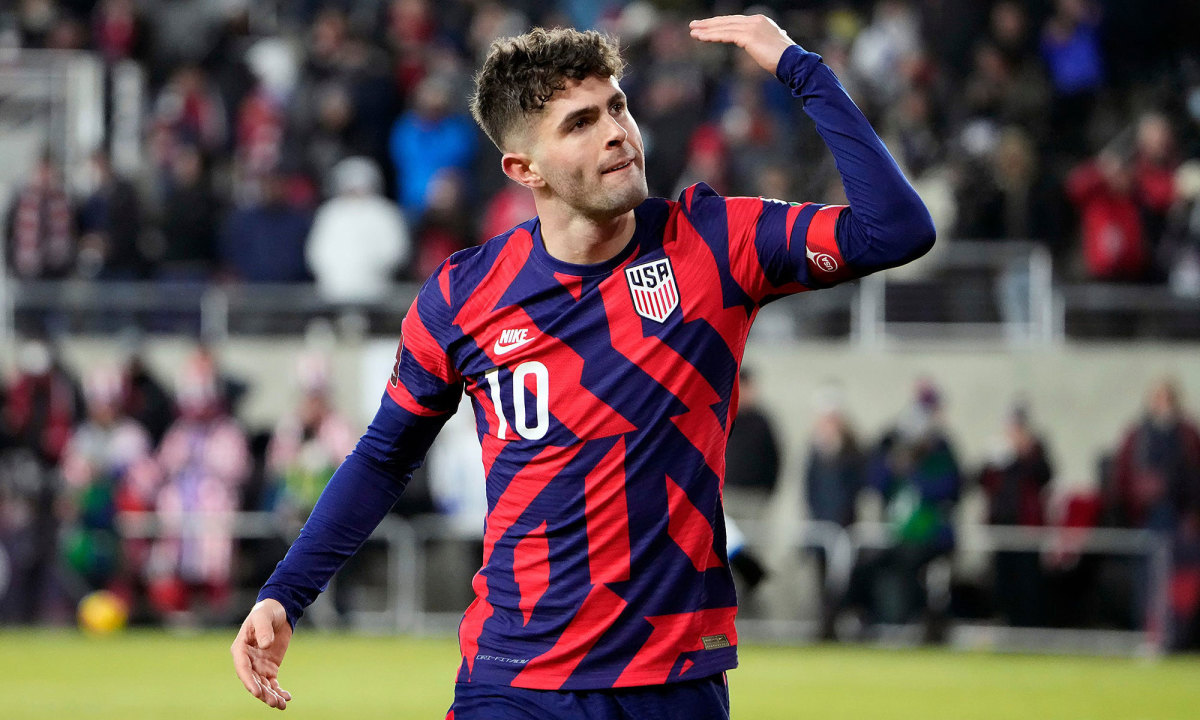
What’s not routine are the pressure and stakes permeating this week. Few U.S. players besides Yedlin remain from 2017. That history isn’t theirs. But Couva does inform the narrative, conversation and coverage around the current team, and it’s something that, collectively, they still somehow have to answer for. This squad has little choice but to lean on whatever differentiation it can find.
“I think because we had a very good team [in 2017], we were a little bit too complacent,” Yedlin says. “We already felt like we had qualified. ‘We’re just playing Trinidad, dah dah dah. This should be an easy win or even a draw—whatever we needed. It should be easy.’ And we were just way too complacent with it.”
The pain remains, and Yedlin said he’d be sure to pass that message on to teammates this week. But both he and Stewart said they’re not too worried about a repeat of that stunning implosion in Trinidad, or of the possibility that the stakes might be too much to bear. This particular pressure is new, but pressure itself isn’t. This generation of American players has changed the calculus, going to Europe at increasingly younger ages, making their way at some of soccer’s biggest clubs and competing under the brightest spotlights. Combine the experience accumulated in both the Champions League and Concacaf crucibles, and that should be enough to maintain focus.
“That’s a great thing about this team. You have young players but you also have players that are playing in extremely high-pressure situations all over the world, that are playing in great leagues with great teams. So they have that experience. They know what that’s like,” Yedlin says.
“I know the players on this team do well at motivating themselves in whatever ways they need to,” he continues. “That’s another strength of this squad. These players have been in tough situations so young, they’ve really learned about themselves and they’ve really figured out themselves.”
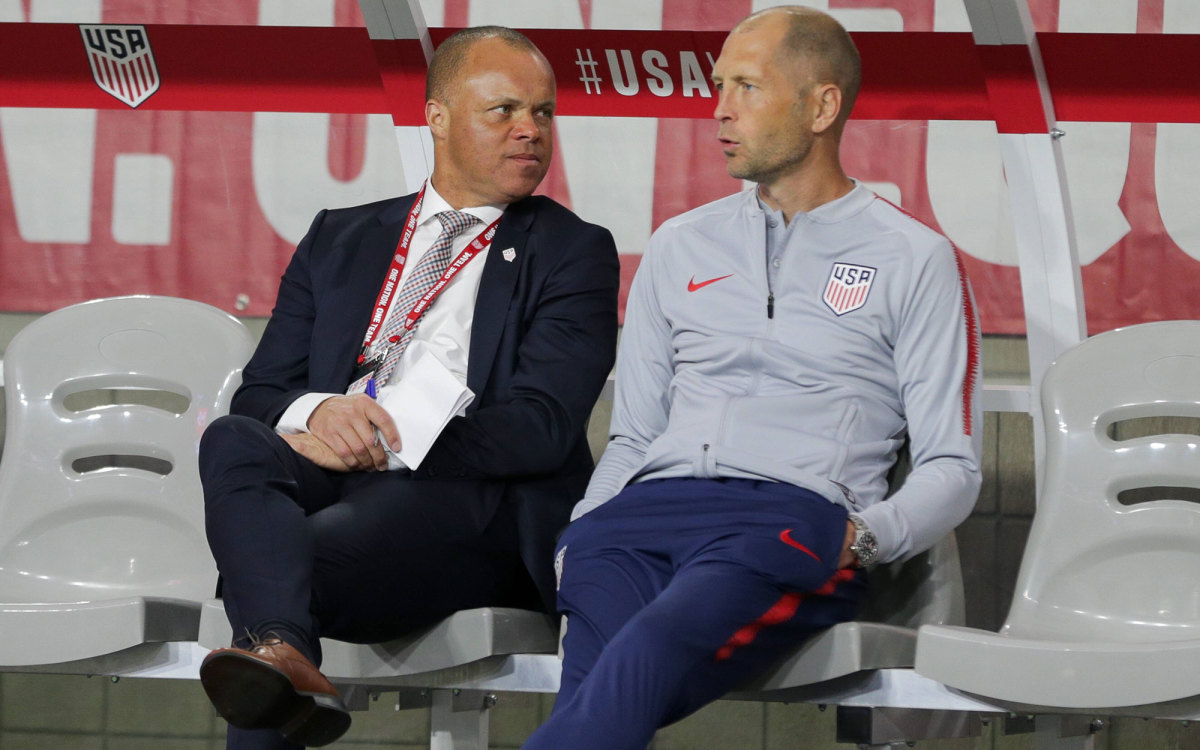
Stewart says this team has already proven it can respond to setbacks and adversity. It was composed and resilient in the tightly contested Gold Cup and Nations League wins over Mexico last summer. Berhalter and the players altered their messaging and tone following that September qualifying window, when talk of nine points was drowned out emphatically by the din at the Cuscatlán. It’s been an enthusiastically humble “one game at a time” approach since. And remember those second-match doldrums? The U.S. has bounced back each time, going 3-0-0 in the three Game No. 3s and outscoring opponents by a combined 9–2.
“It’s always about the next play and that has been, from day one, a mentality of this team which becomes a mindset,” says Stewart, a veteran of three World Cups. “What I’ve seen is that this group has grown, that they accept challenges and also accept that sometimes things don’t go the way that you want. But you focus on your job and you continue with it. So their learning curve has been really good for a young group.”
Stewart, an experienced technical director in the Netherlands and MLS who came aboard in 2018, hired Berhalter. He’s in charge of charting the big-picture path for both the men’s and women’s programs and insists that no single result will derail the sport’s American trajectory. The work he’s doing on player and coach development, competitive structure and playing style will continue regardless of what happens this week, and while he’s contemplating potential responses to any and all outcomes, he refused to address those this month. Right now, the focus is on Mexico, Panama and Costa Rica.
“This is a pinnacle moment for soccer in the United States. We need to qualify. There’s no other way to say it,” Stewart says.
Berhalter has said since taking over that his mission is to “change the way the world views American soccer.” Unless the June playoff is required, he’ll succeed by the end of the month. Either the world will take note of a redemption story authored by America’s first golden generation, or it will wonder whether the wealthy but wayward U.S. will ever really become a soccer nation. The stakes aren’t existential, but they’re close.
“It’s all coming down to this window. That’s clear,” the manager says. “So when we come into camp and we kick off our first game against Mexico, a week later we’re going to know if we’re in the World Cup or not. Every other window you’re pushing it down to the next window and you just want to hang in there, you want to put yourself into position, and we’ve done that. And now it’s about finishing the job.”
Read more of SI’s Daily Cover stories here:
• Straus: The USMNT-Mexico Rivalry Ventures Into the Unknown
• Straus: By George, Tim Weah Is Humbly Reaching His Potential
• Straus: A Young USMNT Learns to Embrace Concacaf’s Dark Arts
